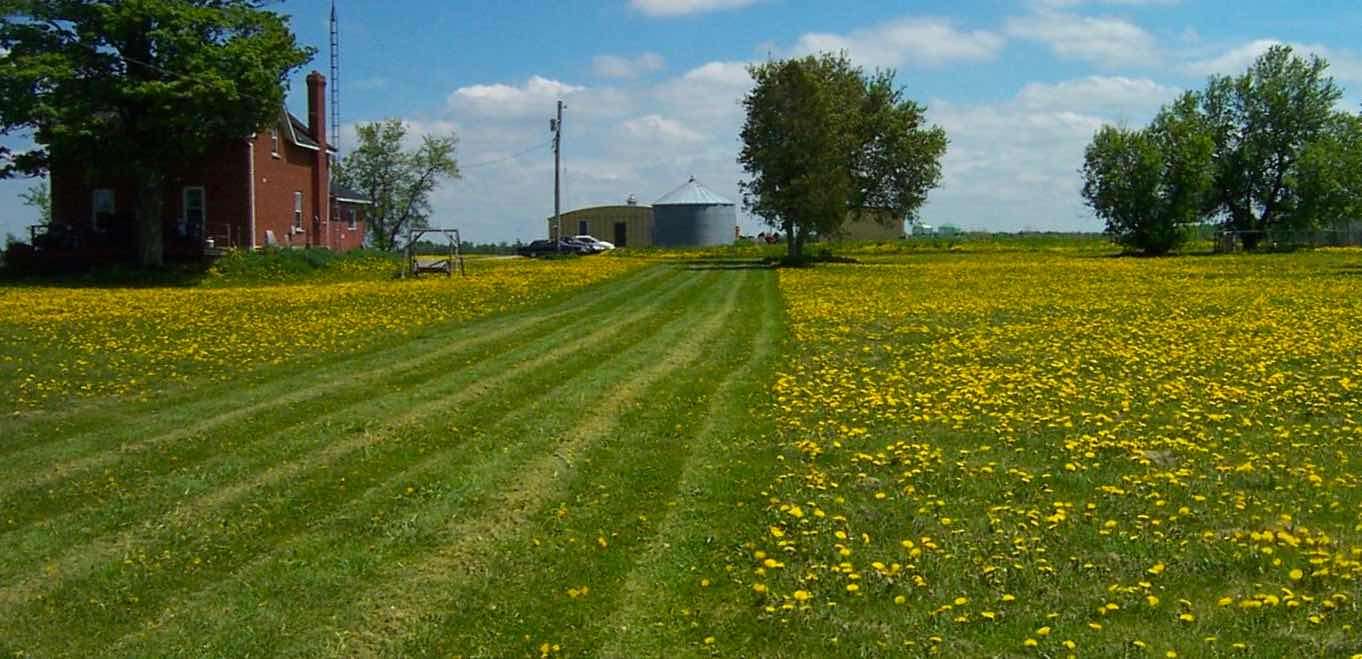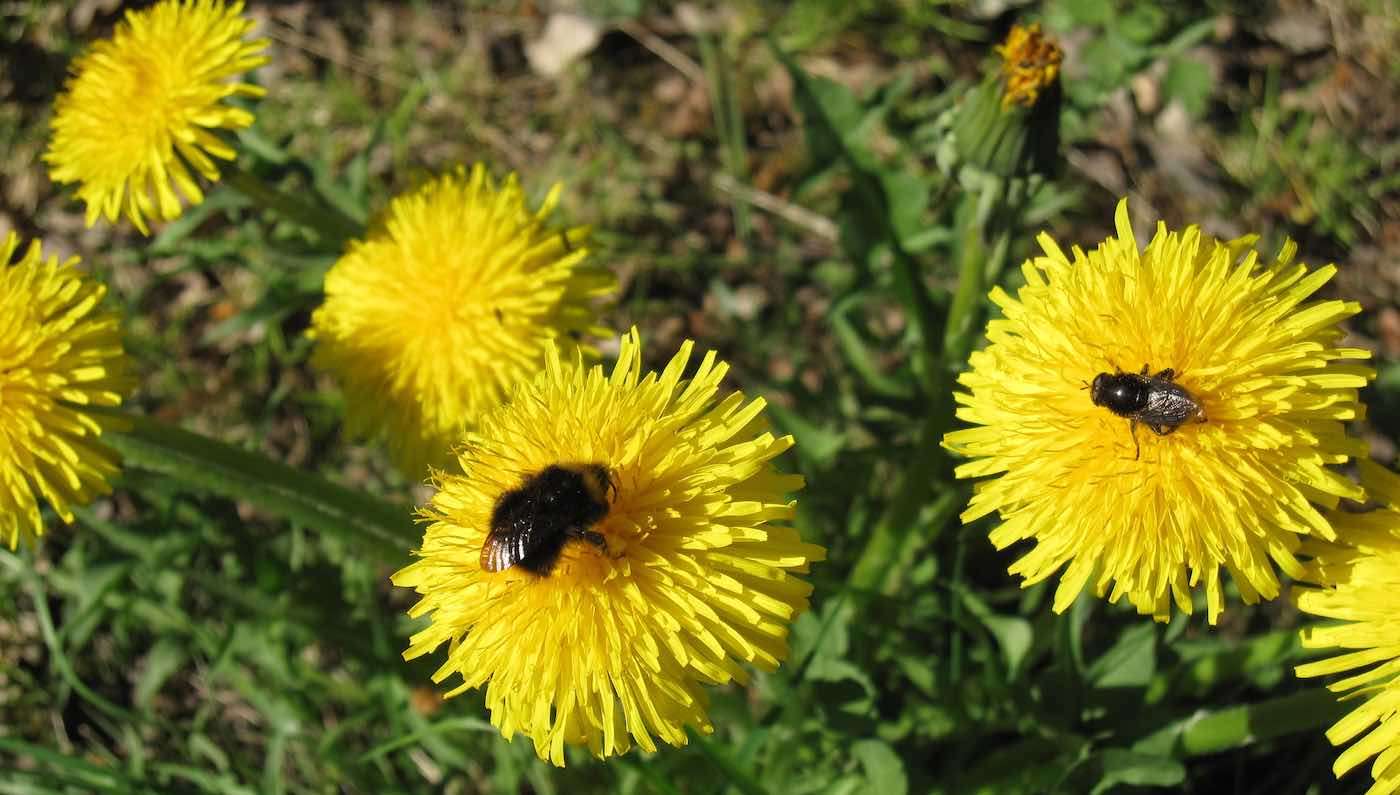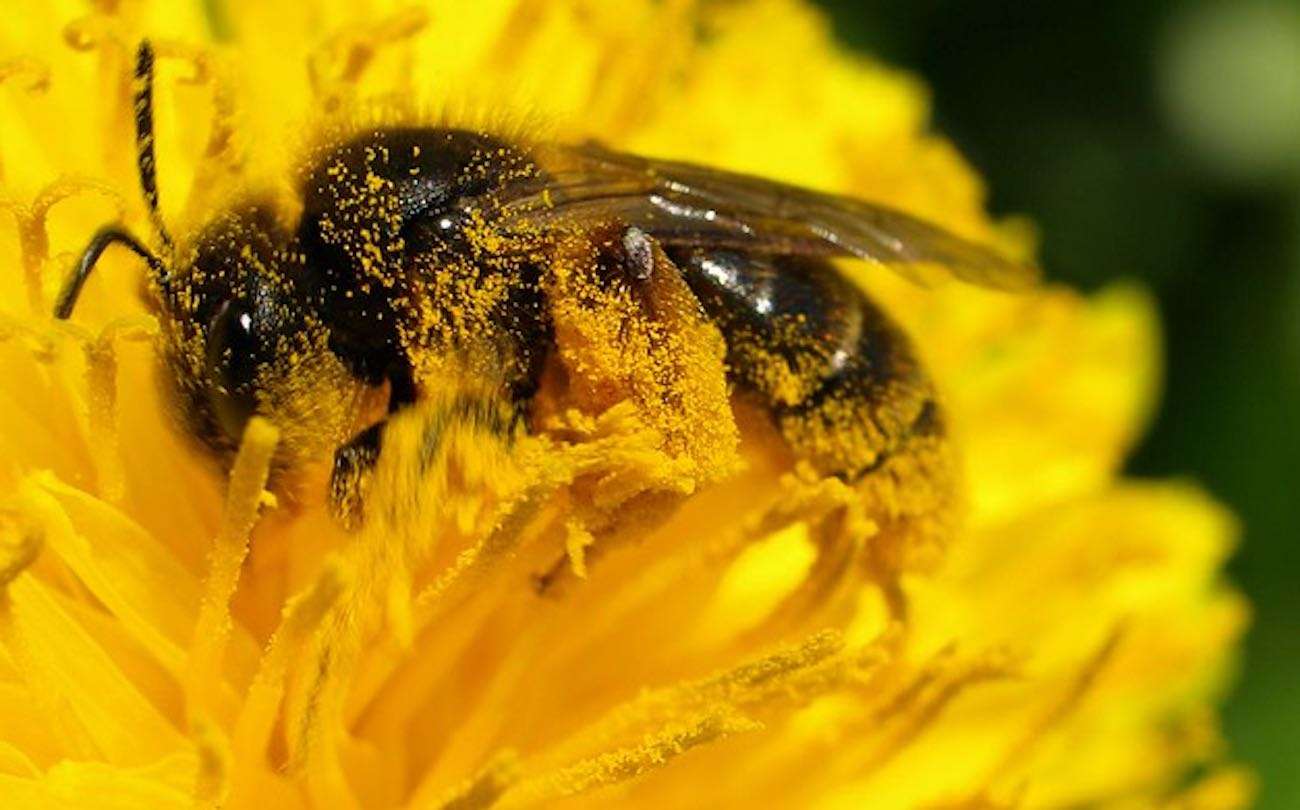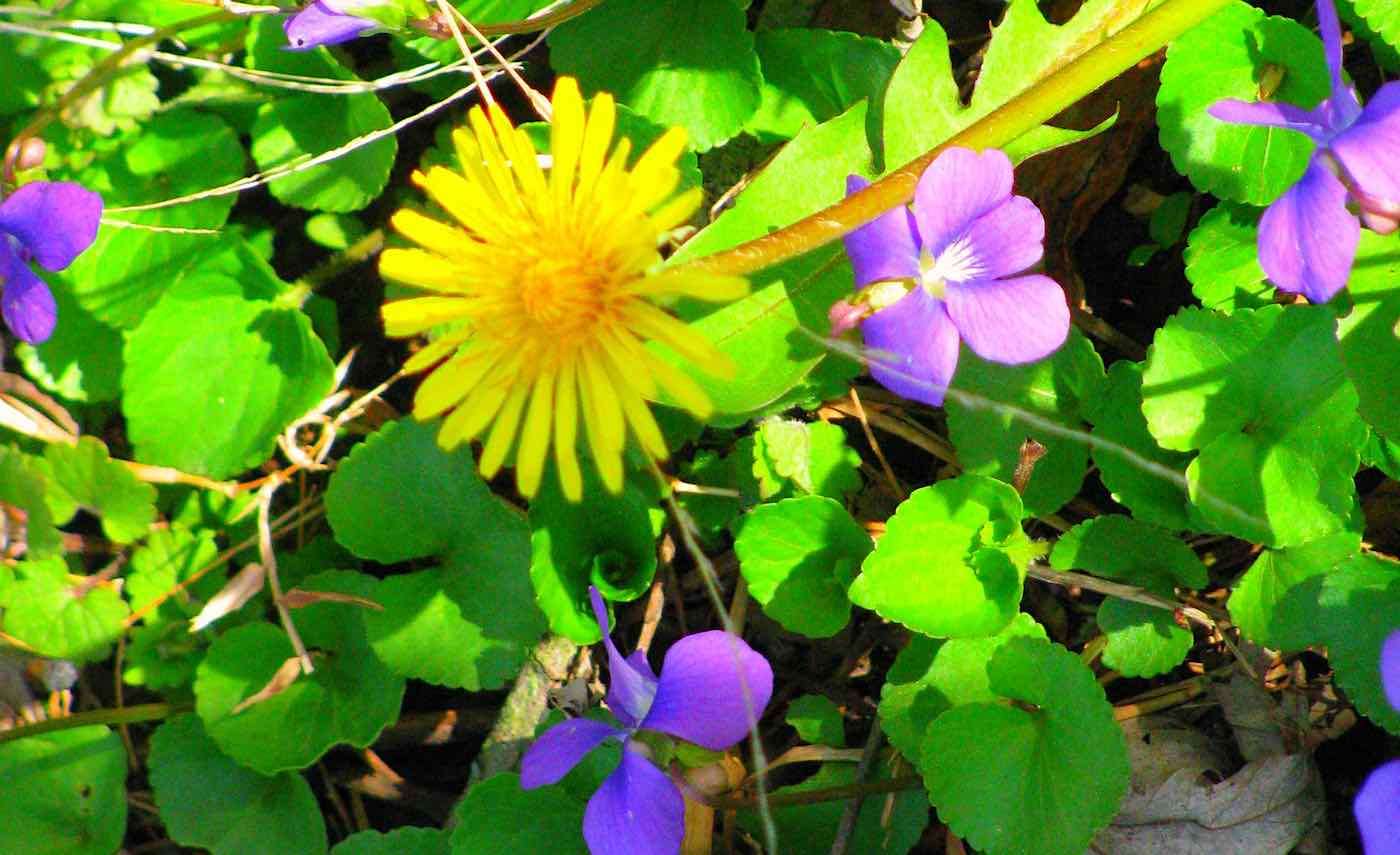Texas Scientists Have Created a Protein That Breaks Down Plastic Bottles
A 'pac-man' protein that gobbles up plastic and breaks it down could open the door to eliminating billions of tons of landfill waste, say Texas researchers.

Backyard bee conservation is all the buzz these days, with people planting native pollinator gardens, installing bee houses, and participating in citizen science endeavors to monitor local bee populations.
And for good reason-in North America, a quarter of our native bee species are at risk of extinction. That's not good for the bees, and it isn't good for us. Bees pollinate 35 percent of our global food supply, and many of the wild plants our ecosystems depend on. Simply put, a world without bees would be a shadow of its former ecological self.
Enter No Mow May, a movement that began in the United Kingdom and is now rapidly spreading throughout the United States, thanks to Bee City USA, a 10-year-old initiative of the Xerces Society, a nonprofit that labors to conserve invertebrates, and thus, biodiversity. No Mow May's popularity lies in its simplicity: Just give bees a leg up during the crucial springtime by crossing a chore off your list and letting your lawn grow for the month of May. This lets "lawn flowers," such as dandelions, clover, and violets, bloom at a time when bee food is scarce.
"If you don't mow your lawn for three to four weeks, you're going to see increases in flowers, which translates to increases in abundance and biodiversity of bees," explains Dr. Israel Del Toro, an assistant professor at Lawrence University and one of the originators of the US No Mow May movement.
As a conservation photographer who recently began documenting No Mow May's spread in my home state of Wisconsin, I've learned some important lessons about participating in No Mow May. Here's how to do it right-for the bees, for your lawn, and for you.

Lawns grow fast and long in the spring; here in Wisconsin, some No Mow May participants' lawns topped out at almost a foot tall! Not everyone will appreciate your long grass or your carpet of dandelions, which some see as counter to long-held notions of the "prim and proper" American lawn. To avoid misunderstandings, "talk to your neighbor; talk to your community; get the word out about what you're doing and why you're doing it, and generally you'll find a lot of good allies," says Del Toro.
Yard signs are also helpful for informing others that your wild lawn means that you're helping the bees and are not a neglectful homeowner. Many communities that adopt No Mow May, such as Appleton, Wisconsin, and Edina, Minnesota, provide free yard signs. You can also obtain free, print-at-home yard signage from the Xerces Society.
Be mindful of grass height rules. In many communities, grass height is limited to eight or 10 inches, but those that have adopted No Mow May will suspend enforcement of these restrictions for the month. If this is the case in your community, make sure to cut your grass at the end of the month. Mike Wiza, mayor of Stevens Point, Wisconsin, told me that No Mow May went well in his community-in part, because residents were prompt about cutting their grass by the end of May. If they hadn't, Wiza says, it could have caused "all sorts of problems."

Unsure whether your community has adopted No Mow May? Call your city or homeowners association to determine what rules are in place. If your community hasn't adopted No Mow May, but you still want to participate, try laying off the mower until your grass reaches your community's maximum allowed grass height. This will allow flowers to bloom for at least a little while.
You can also encourage your community to adopt No Mow May. As mayor Wiza put it, "I don't always have the ideas. My job is to show [the community] how we can do it and clear obstacles out of their way. No Mow May wasn't my idea; it [came from] members of the community."
If you face resistance from your community, Del Toro suggests reminding naysayers that "No Mow May is a completely opt-in movement." Meaning folks who covet a perfectly manicured lawn can keep theirs but then agree not to "stand in the way of people that want to think a little about biodiversity in their yard."

We know-dandelions, despite being pretty and edible, are non-native and invasive. So why promote a movement that encourages their growth?
The basic answer? "Don't let perfect be the enemy of good." Sure, it'd be great to turn your entire neighborhood into a bee paradise of native plants, but that can take quite a bit of time and money. And despite younger generations' embrace of the eco bona fides of no-lawn life, most homeowners will want at least some lawn. So why not find ways to make them more ecologically beneficial?
While dandelions have become the poster child for No Mow May, other plants-including native species-may also be lurking in your lawn. "It's not just dandelions," says Dr. Claudio Gratton, a professor and entomologist at the University of Wisconsin-Madison. "There are a lot of other plants that are going to be there." In Massachusetts, scientists found 63 plant species in herbicide-free lawns, a whopping 30 percent of which were native to the state. Common blue violets, a native plant species frequently observed in that study, not only attract bees but are also an important host plant for fritillary butterflies. In Wisconsin, common blue violets were found in 95 percent of No Mow May lawns but only 20 percent of mowed parks.
Most of us probably delighted in dandelions as children but have been conditioned to hate them as adults, steeped as we are in American lawn culture. No Mow May often brings into stark relief "this crazy fascination that we have in North America with the prototypical American lawn," says Gratton. "This perfect, golf-course-putting-green-style, every-blade-in-its-perfect-place environment with no other flowers-[No Mow May] forces us to think about our relationship with nature, the way we have squeezed nature to suit our aesthetic needs, and its consequences for all the other biodiversity out there that plays really important roles in our lives as well."
The bottom line is that "weedy" lawns-even those with some non-native plants-have the potential to support native bees. For example, in the Massachusetts study noted above, 111 bee species were found in the herbicide-free lawns, which represented more than a quarter of the bee species known in the state. In Kentucky, 37 species of bees were found feeding on dandelions and clover alone.
While No Mow May is a great step, experts warn that backyard bee conservation efforts cannot stop there. "It's accessible-everyone can do it; you have agency and are a participant in conservation," stresses Gratton. However, "the risk is that folks might think this is sufficient."
Many communities, beyond giving residents a good excuse to stash away their mowers, are using No Mow May to educate residents about the many other aspects of bee conservation. Organizers in Appleton, Wisconsin, for instance, provided residents with information on reducing chemical use, planting native plants, and creating nesting habitat for bees-which can be as simple as leaving brush piles-"where we typically find bumblebee colonies," according to Del Toro-in corners of your yard. In my community of Shorewood Hills, Wisconsin, the city is gifting free pollinator-friendly native plants to children of participating households this year in an effort to increase native plant populations, and to get the whole family involved too.
So, embrace the No Mow May movement-tell your neighbors about it, and if your community hasn't already, ask it to adopt the movement. And when June rolls around, start asking what else you can do (or not do) to help bees all year long.
Anne Readel is a photographer, writer, and lawyer with a Ph.D. in conservation biology. Her work has been published by the New York Times, Audubon, and Better Homes & Gardens, among others. She lives in Madison, Wisconsin.
(This article was originally published in Sierra magazine.)
SHARE This Story With All Your Nature-Loving Pals…
Be the first to comment